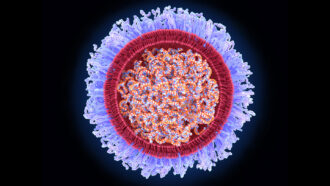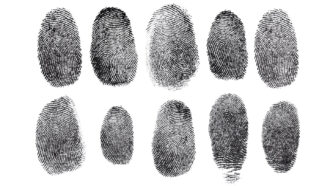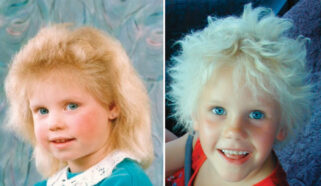Newfound DNA ‘enhancer’ behind many natural blonds
Not just genes play a role in hair color, a new study finds

Genes alone may not control the development of blond tresses in some Europeans (or people with European ancestry).
StudioStella/iStockphoto
Some Europeans have enhancers that make them blond. It isn’t a hair dye. It’s a special snippet of DNA that controls pigment production in hair follicles. Not a gene itself, this snippet is responsible for turning on the activity of at least one gene, a new study finds.
DNA is the genetic material in our cells that hosts genes. But that DNA consists of more than genes. Much of each strand used to be thought of as junk. Just filler. In fact, recent research has been showing, much of that non-gene DNA performs important — if sometimes little appreciated — functions.
David Kingsley is an evolutionary geneticist at Stanford University in Palo Alto, Calif. His team has just found that many people of northern European ancestry have inherited a snippet of non-gene DNA that enhances their bodies’ instructions to produce blond hair.
Even people who are related or look alike often possess a broad range of genetic variations in their DNA, ones that slightly alter how their body grows, develops or responds to outside stimuli. Some of these variants are known as single nucleotide polymorphisms, or SNPs. They affect just one of the chemical units that make up DNA and are represented by the letters A, C, T and G. Most people may carry a C at a particular place in their DNA, but some people may have a T instead. Scientists have found millions of SNPs in people’s DNA. Some of them have been linked to a higher chance of getting certain diseases. Others affect how tall a person may grow, or other aspects of a person’s appearance.
Earlier research had linked a particular SNP with blond hair in Europeans. But why the SNP mattered remained a mystery. After all, it was not part of a gene. Now Kingsley’s group provides evidence that the blond-inducing SNP lies within a piece of DNA known as an enhancer. Enhancers are stretches of DNA that act something like light switches to turn a gene on under certain conditions. But they are located far away from genes – like a light switch in California controlling a bulb in Iowa. Still, despite that distance, they can control a gene’s activity.
Kingsley’s team genetically altered mice to carry the blond enhancer. And sure enough, mice carrying this DNA change developed lighter colored coats than did mice with another version of that enhancer. The scientists reported their finding June 1 in Nature Genetics.
The new enhancer helps control the actions of a gene that was already known to affect hair color. This blond enhancer ultimately leads to less pigment production in hair follicles, leading to lighter colored hair. It does not, however, affect eye or skin color, the team found.
Power Words
DNA (short for deoxyribonucleic acid) A long, spiral-shaped molecule inside most living cells that carries genetic instructions. In all living things, from plants and animals to microbes, these instructions tell cells which molecules to make.
gene A segment of DNA that codes, or holds instructions, for producing a protein. Offspring inherit genes from their parents. Genes influence how an organism looks and behaves.
enhancer Something that boosts the response of some system, either in living organisms or in a chemical or physical environment. (in genetics) A stretch of DNA that can affect the operation of a gene even though it is typically located far from that gene.
evolutionary genetics A field of biology that focuses on how genes — and the traits they lead to — change over long periods of time (potentially over millennia or more). People who work in this field are known as evolutionary geneticists.
follicle The cells and other tissues that surround hair at its root.
genetic Having to do with chromosomes, DNA and the genes contained within DNA. The field of science dealing with these biological instructions is known as genetics.
nucleotide Any of the four chemicals found in DNA. They are: A (adenine), T (thymine), C (cytosine) and G (guanine). A links with T, and C links with G, to form DNA.
pigment A material, like the natural colorings in skin, that alter the light reflected off of an object or transmitted through it. The overall color of a pigment typically depends on which wavelengths of visible light it absorbs and which ones it reflects. For example, a red pigment tends to reflect red wavelengths of light very well and typically absorbs other colors. Pigment also is the term for chemicals that manufacturers use to tint paint.
single nucleotide polymorphism Abbreviated SNP and pronounced snip, this is a common variation in a standard sequence of DNA in which one of the original nucleotides substitutes for another. This may change the function of that span of DNA. SNPs are inherited. Each person carries millions of SNPs that make them unique from other people.
SNP Abbreviation for single nucleotide polymorphism.
stimulus (plural: stimuli) Something that prompts a response in a living organism or in a controlled environment (including a chemical or physical test system).







